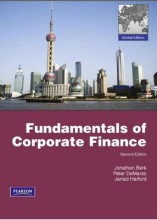Profits, Entry and Exit: the Basis for the 'Invisible Hand - The 'invisible hand' theory
4 important questions on Profits, Entry and Exit: the Basis for the 'Invisible Hand - The 'invisible hand' theory
In the free-enterprise system, market prices serves two important and distinct functions:
- Rationing function of price = to distribute scarce goods to those consumers who value them most highly
- Allocative function of price = to direct resources away from overcrowded markets and towards markets that are undeserved
The 'invisible hand' theory of Adam Smith is:
Two attractive features of of the invisible hand concept are:
- The market outcome is efficient in the long run (price equals marginal costs).
- The price buyers must pay is no higher than the cost incurred by suppliers.
- Higher grades + faster learning
- Never study anything twice
- 100% sure, 100% understanding
The allocative function of price cannot operate unless firms can enter new markets and leave existing ones at will. Barriers to entry are:
The question on the page originate from the summary of the following study material:
- A unique study and practice tool
- Never study anything twice again
- Get the grades you hope for
- 100% sure, 100% understanding
































